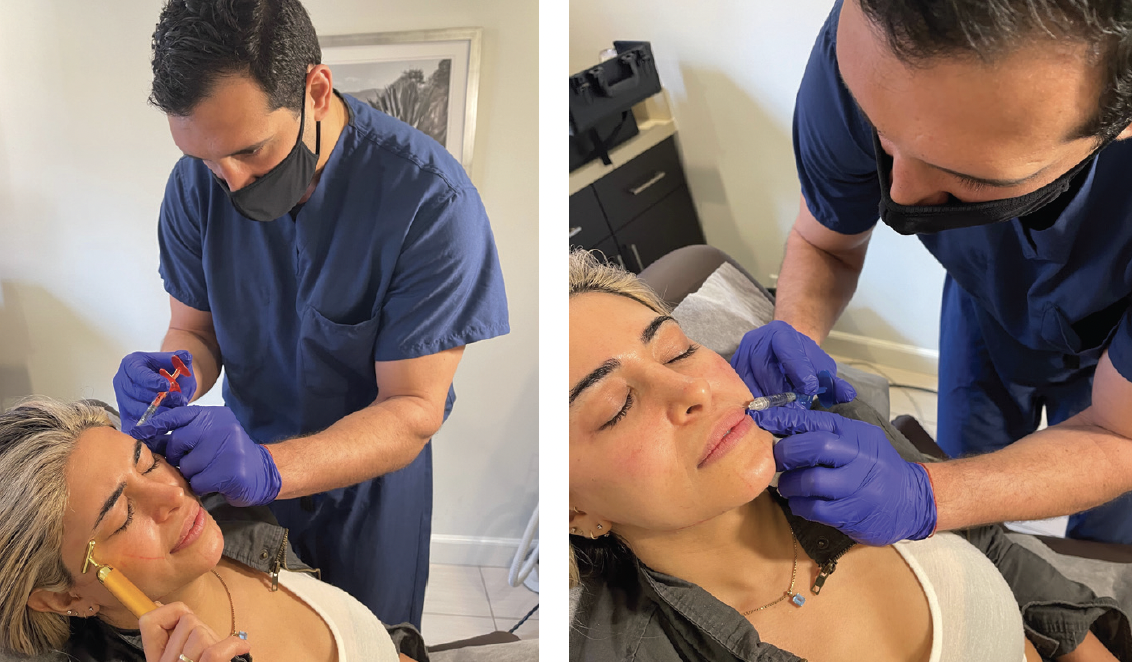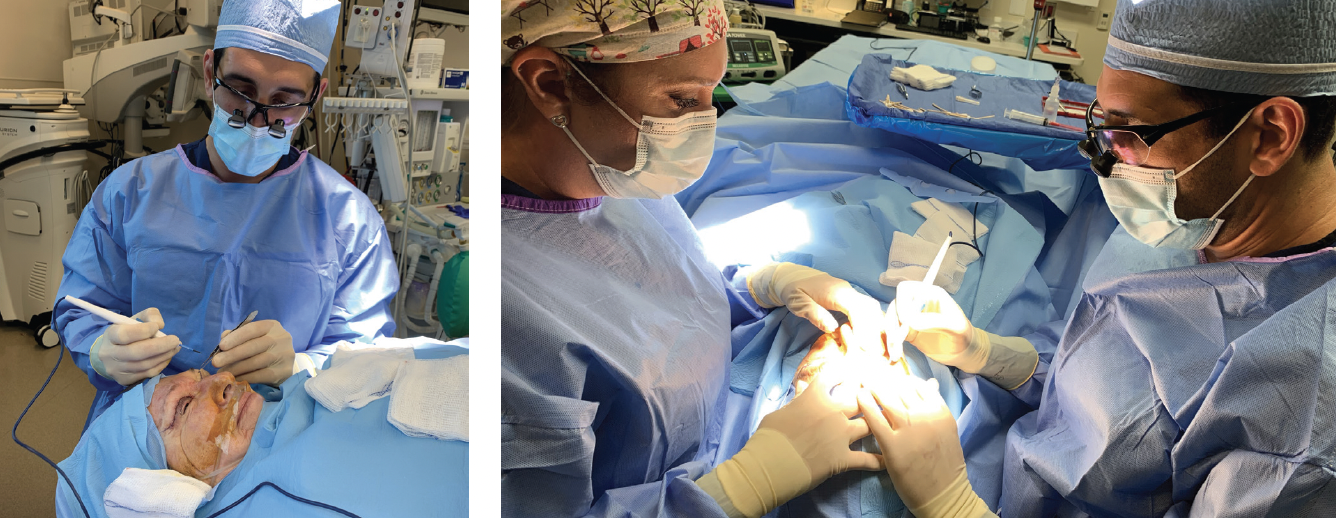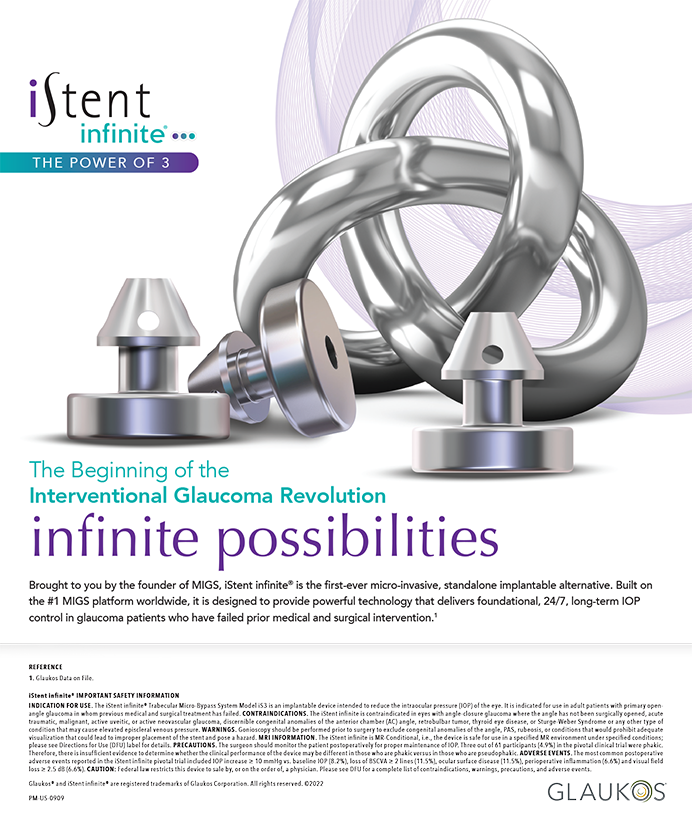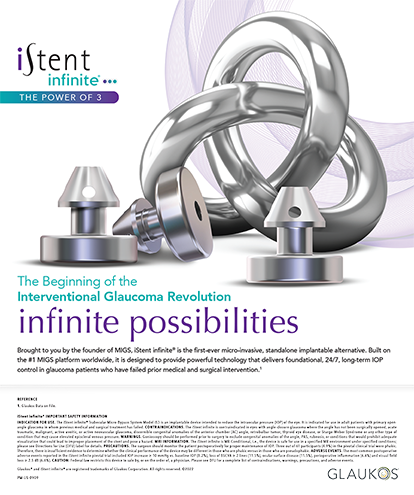
The global aesthetics market is exploding. Projections indicate that revenue will reach $15.9 billion by 2025, up from $9.4 billion in 2020.1 According to one report, the expected compound annual growth rate (10.9%) in this market is largely attributable to an increase in patient demand for facial aesthetic treatments and noninvasive cosmetic procedures. New products on the market and increases in the disposable income and spending capabilities of potential patients—a bright spot in the otherwise dark time of COVID-19—are additional factors.
Now is an opportune time for eye care providers to get involved in aesthetics. The current pandemic has brought ocular beauty front and center. People don’t want to log onto Zoom calls while wearing their glasses, and they don’t want to deal with foggy glasses while wearing masks in public. Many people are seeking to resolve these problems and enhance their quality of life.
For cataract and refractive surgeons, hearing patients express how much they appreciate the gift of sight is a powerful experience. We love sharing in the joy they feel. Helping them achieve the look they want when they can see themselves more clearly is the next step.
Aesthetics and anterior segment surgery share several synergies that can both lengthen the patient lifecycle and grow the patient base. In my experience, many people who are interested in refractive surgery (lens- or laser-based) are also interested in elective procedures such as eyelid surgery, dermal fillers, and neuromodulators. These patients are also likely to refer family members and friends for eye care. (For more on eyelid surgery, see “Ready to Add Upper Blepharoplasty to Your Offerings?”)
TOP TIPS
Finding our niche in the ocular aesthetics market doesn’t have to be hard. Here are four tips for segueing into this field.
1. Find someone to shadow. I got into aesthetics as a resident by shadowing one of my attendings. I learned how she educated patients, how she delivered their treatments, and how patients typically responded to the results. When patients returned for follow-up visits, they looked better and exuded more confidence. I started to ask them why they were seeking aesthetic treatments. Their responses were similar: “It makes me feel more like I feel inside than what I used to see in the mirror. And when I see this, I feel more energized. I eat better. I go to the gym more.”
Once I acknowledged the psychological connection between looking good and feeling good, I gained a clear resolve to offer aesthetic services in addition to cataract and refractive surgery.
2. Leverage your experience. Aesthetics is one of the fastest growing industries in health care, and the return on investment can be high. (For more on this topic, see “The Business of Aesthetics in Ophthalmology.”) As a result, more practices with a patient-centric, concierge-style service model are considering offering aesthetic services.
We all completed some aesthetics training during residency through our oculoplastics rotations. We also have experience injecting neuromodulators for the treatment of blepharospasm, strabismus, and migraines and using hyaluronic acid. We can build on these experiences by offering dermal fillers and neuromodulators.
3. Take the plunge. I started dabbling in aesthetics as a side gig. I practiced on my mother and my sister, and then I began offering private bookings. Seeing my patients’ results and reactions was extremely rewarding, and I began to view ocular aesthetics as a potential complement to my practice of anterior segment surgery.
After my fellowship, I took a position at a general ophthalmology practice that focused mainly on cataract surgery. A few months later, I pitched the idea of adding ocular aesthetics to our offerings. The owner of the practice agreed without hesitation. The practice currently offers neuromodulators, dermal fillers (Figures 1 and 2), and upper and lower lid blepharoplasty (Figure 3).

Figure 1. Before (left) and after (right) photographs of a patient who received dermal fillers to the temples, cheeks, lips, chin, jaw, and nose.

Figure 2. Dr. Moarefi injects dermal fillers in the temple (left) and lips (right).

Figure 3. Dr. Moarefi performs an upper blepharoplasty.
Adding aesthetic services has led to an increase in the volume of refractive surgery procedures we perform. Many of my patients who receive injections of onabotulinumtoxinA (Botox Cosmetic, Allergan) have become LASIK patients and vice versa. I have also observed similarities between people who are interested in cosmetic procedures and those who are interested in premium lenses. The cosmetic cycle allows me to strengthen my connection with these individuals because injectable procedures are generally performed multiple times a year. This setup brings more traffic to our clinic.
Introducing aesthetics to our practice has helped me build my career by increasing my exposure to patients and generating word-of-mouth referrals.
4. Get comfortable talking to patients about aesthetic offerings. Most patients appreciate learning that our practice offers these supplementary services, but it can be uncomfortable talking to them about aesthetics. (For more on this topic, see “One-Stop Shopping.”) I prefer to follow their lead. For example, if a cataract surgery patient mentions at the postoperative evaluation that they’ve noticed the effects of aging on their face since undergoing surgery, I mention that we offer blepharoplasty, dermal fillers, and neuromodulators. This subtle approach can pique their interest.
Connecting with patients—whether it's through cataract surgery, refractive surgery, or even a pre- or postsurgical consultation—can make it easier to find an opening to discuss aesthetic services with them in an organic way. At some practices, it is the surgical or patient coordinators who discuss aesthetic offerings with patients, or pamphlets and signs in the waiting room are used to announce that aesthetic services are available. There is nothing wrong with waiting for patients to broach the subject. I, however, have grown more comfortable talking to patients about aesthetics over time much like I’ve grown more comfortable talking to patients about premium IOL options.
CONCLUSION
Patients’ interest in ocular beauty is on the rise, and we ophthalmologists have a unique opportunity to become key stakeholders in the field of ocular aesthetics. Why not leverage our experience and the growing market to expand the list of services we can provide to patients?
1. Medical aesthetics market product (Botox, dermal filler, liposuction, cellulite reduction, fat reduction, skin tightening, breast implant, tattoo removal, thread lift), end user (clinic, medical spa, hospital, beauty center) – global forecast to 2025. Report code MD 4793. August 2020. Accessed October 12, 2021. https://www.marketsandmarkets.com/Market-Reports/medical-aesthetics-market-885.html




